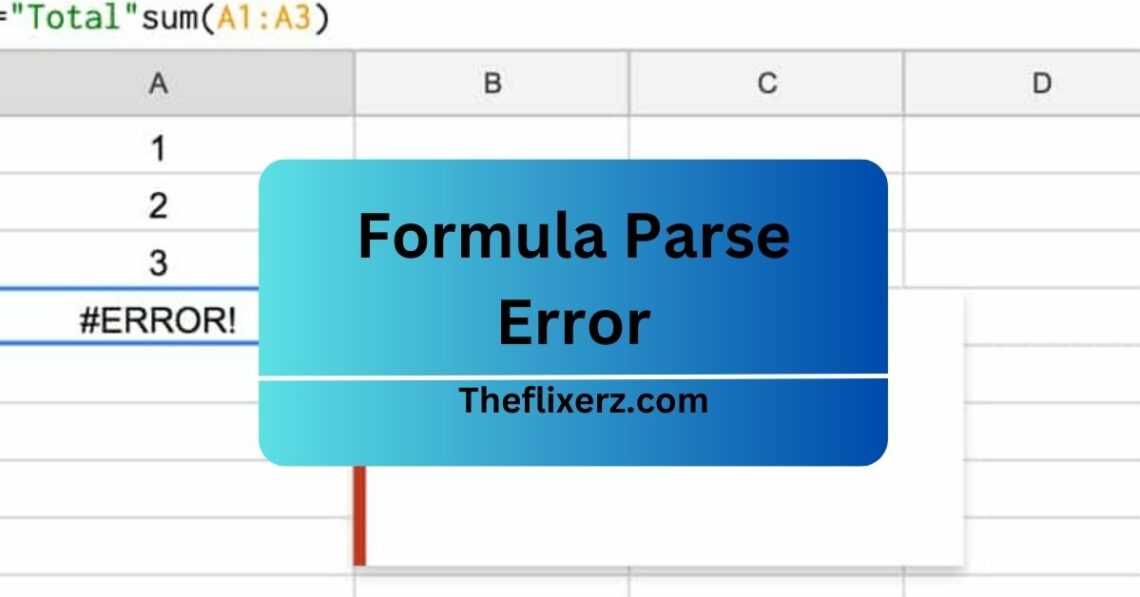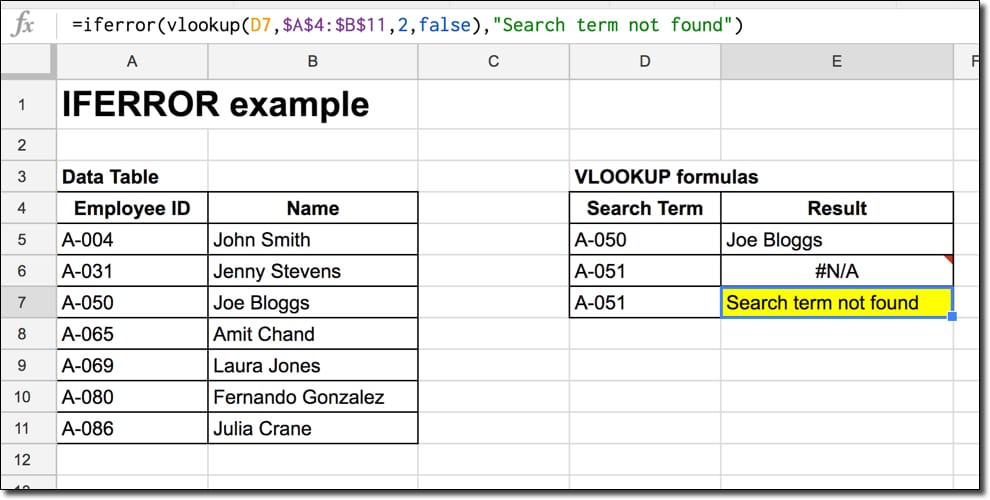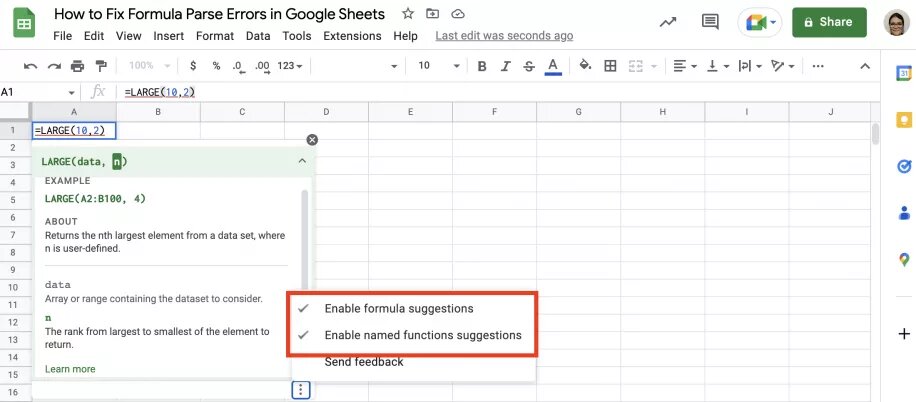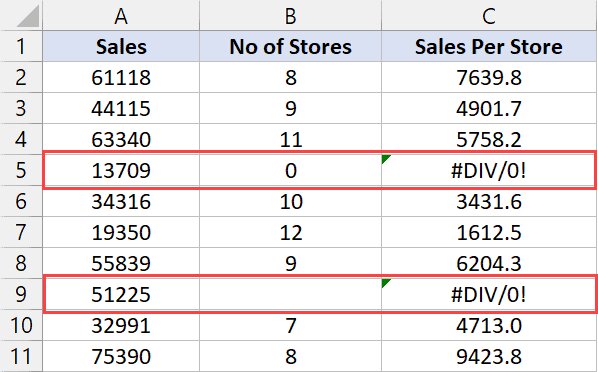
Formula Parse Error – Ultimate Guide In 2024!
In the dynamic realm of data analysis and spreadsheet wizardry, Google Sheets is a formidable ally, offering many functions to unravel complex datasets. However, even the most seasoned spreadsheet enthusiasts encounter a common adversary the formula parse error.
Formula parse error in Google Sheets occurs when the spreadsheet cannot interpret a given formula, often due to typos, incomplete syntax, or incorrect data types. It interrupts the desired computation, necessitating careful formula inspection for accurate results.
This article will explore the intricate world of formula parse errors in Google Sheets, unraveling their causes and providing insights into effective troubleshooting techniques.
Table of Contents:
What Is A Formula Parse Error – Unraveling The Mystery!
A Formula Parse Error in Google Sheets indicates that the spreadsheet application encountered difficulties interpreting a formula. It occurs when there are issues with the syntax, such as typos, incomplete expressions, or mismatched data types.

The error can manifest in various forms, including #N/A, #DIV/0!, #REF!, #VALUE!, #NAME?, #NUM!, #ERROR!, and #NULL!, each pointing to specific problems in the formula. It often arises when using functions like VLOOKUP, SUM, or multiplication/division operations.
Understanding the error messages and carefully reviewing the formula for correct syntax, valid references, and proper data types is crucial for resolution. Functions like IFERROR can help handle errors gracefully by displaying custom messages or alternative results.
Additionally, the order of operations and adherence to syntax rules are essential to prevent and resolve Formula Parse Errors, ensuring accurate and efficient data analysis in Google Sheets.
Read Also: ART TERKEURST NEW WIFE – CLICK FOR A DETAILED BREAKDOWN!
Why Formula Parse Errors Happen – Explore Now!
Formula Parse Errors in Google Sheets occur due to various reasons:
| Incorrect Syntax | Typos, missing brackets, or misplaced operators can make the spreadsheet clear, leading to a parse error. |
| Incomplete Syntax | Typos, missing brackets, or misplaced operators can clarify the spreadsheet, leading to a parse error. |
| Mismatched Data Types | Using the wrong data type, like performing math operations on text values, results in a value Error. |
| Invalid References | Deleting cells or referencing non-existent ranges leads to REF errors. |
| Division by Zero | Attempting to divide by zero or using the AVERAGE function on an empty range triggers DIV/0 errors. |
| Name Errors | Misspelling function names or referencing non-existing named ranges results in name errors. |
| Lookup Issues | N/A errors occur when lookup functions can’t find the specified value in the given range. |
| Numeric Problems | NUM errors surface when dealing with vast numbers or invalid numeric arguments. |
| Formula Complexity | Errors can arise from complex formulas, significantly when parentheses or concatenation symbols are misused. |
Understanding these triggers empowers users to review meticulously and correct formulas, ensuring error-free data analysis in Google Sheets.
Read Also: ALEXANDER THE GREAT HEIGHT – CLICK TO UNLOCK THE DETAILS!
How To Fix Formula Parse Errors? – Easy Steps!
Formula Parse Errors in Google Sheets can be daunting, but fear not – we have the ultimate guide to help you troubleshoot and resolve them. Here’s a step-by-step approach to fixing these errors and ensuring your formulas work seamlessly:

1. Check Formula Inputs:
Pay close attention to cell references and named ranges when checking formula inputs. Confirm that the data you’re pulling or calculating from these sources is up-to-date and correctly aligned with the intended logic of your formula.
Additionally, verify any external data sources for accuracy, ensuring seamless integration into your formulas.
2. Use the IFERROR Function:
Utilizing the IFERROR function enhances the user experience by gracefully handling potential errors in your formulas. This function allows you to customize error messages or substitute values, contributing to a more user-friendly and transparent presentation of your spreadsheet data.
3. Spelling and Parentheses:
Double-checking the spelling of functions, ranges, and named references is crucial for avoiding formula parse errors. Typos or inaccuracies in these elements can disrupt the entire formula.
Additionally, meticulously review the placement of parentheses to guarantee they are correctly opened and closed, addressing any potential incomplete syntax and ensuring the accurate execution of your formulas.
4. Operator Accuracy:
Accurate utilization of mathematical operators is paramount to prevent formula parse errors. Employing the appropriate operators for specific mathematical operations ensures precision, minimising the chance of unintended mistakes and upholding the overall accuracy of your formulas.
This meticulous approach safeguards the integrity of your calculations and promotes a reliable spreadsheet environment.
5. Opt for Cell References:
Choosing cell references over hard-coded values enhances the adaptability of your formulas to changes in data. It streamlines the updating process and reduces the risk of errors linked to manual input. Opting for cell references fosters a dynamic and error-resistant approach to managing data in your spreadsheet.
6. Quotation Marks for Text Values:
Applying quotation marks to text values in your formulas is crucial to signify their distinction from numerical values. This practice helps the spreadsheet accurately interpret and process textual data, preventing potential conflicts or errors when working with mixed data types.
By adhering to this convention, you establish clarity in your formulas and enhance the overall accuracy of your spreadsheet calculations.
6. NUM Errors:
Meticulously examine the numeric arguments within your formula. The error message offers valuable insights, pinpointing the specific segment of the formula that requires scrutiny. This targeted approach facilitates efficient error resolution and ensures the accuracy of your calculations.
7. DIV/0 Errors:
DIV/0 errors by diligently reviewing the denominator in your formulas to ensure it is never zero. Implement the IFERROR function to handle such situations gracefully, allowing you to display a custom message or value instead of encountering a divisive error.

This proactive approach enhances the robustness of your spreadsheet calculations.
8. REF Errors:
Meticulously identify and replace invalid cell references within your formula. Be vigilant about changes in your spreadsheet, such as deleted cells or ranges that might render your references obsolete.
Regularly updating formulas in response to structural alterations in your data will help maintain formula integrity and prevent disruptive REF Errors in your calculations.
9. VALUE Errors:
When encountering VALUE Errors, thoroughly investigate text/number mismatches, spaces in cells, or discrepancies in date formats within your formula. Rectifying these issues will contribute to the accuracy and reliability of your spreadsheet calculations, eliminating the occurrence of VALUE Errors.
10. N/A Errors:
To gracefully manage N/A Errors in lookup functions, implement the IFERROR function to display customized messages instead of the default error code.
It enhances the user experience by providing clear feedback and ensures a more polished and professional appearance in your spreadsheets. Additionally, it contributes to better data interpretation and decision-making.
11. ERROR Messages:
When encountering an ERROR Message, meticulously review your formula for accuracy. Pay special attention to correct bracket placement and ensure proper syntax, clarifying common pitfalls such as missing ampersands in concatenation.
This thorough examination helps identify and rectify issues, ensuring the integrity of your formula.
12. NAME Errors:
To tackle NAME Errors, meticulously check for typos in function names and verify the existence of named ranges referred to in your formula.
Ensure correct spelling and capitalization, as minor discrepancies can lead to this error. By conducting a detailed examination, you can rectify these issues and ensure the seamless functioning of your formula.
Read Also: ALT SHADOWS HUY CUONG • NEED SAUCE • 2022!
Frequently Asked Questions:
1. How Do I Prevent Parse Errors in Large Datasets?
Opt for cell references instead of hard-coded values, break down complex formulas into smaller parts for easier troubleshooting, and use error-checking functions like IFERROR.
2. Can Formula Errors Impact Other Cells in the Spreadsheet?
Yes, formula errors can propagate to other cells if those cells depend on the one containing the error. It’s crucial to address the mistakes promptly to maintain the integrity of the entire spreadsheet.
3. Are There Automated Tools for Detecting and Fixing Formula Errors?
Some third-party tools offer advanced formula auditing and error-checking features. Explore these tools to streamline the process of identifying and fixing formula parse errors in large datasets.
4. What Should I Do If I’m Unable to Identify the Cause of an Error?
If the cause remains elusive, break down the formula into smaller parts, verify each component individually, and consider seeking assistance from online forums or colleagues.
Conclusion:
Understanding and addressing formula parse errors are vital for accurate spreadsheet data calculations. Following simple troubleshooting steps can enhance your formula-building skills and ensure error-free results.
Read Also:




